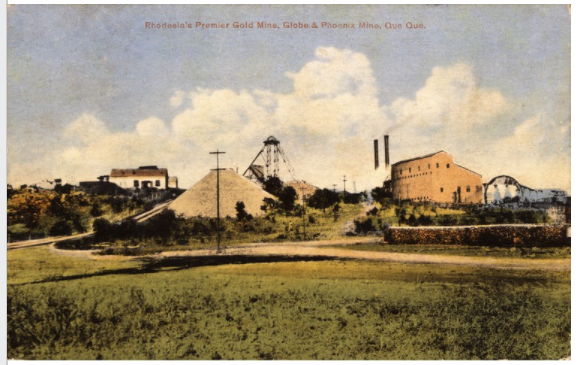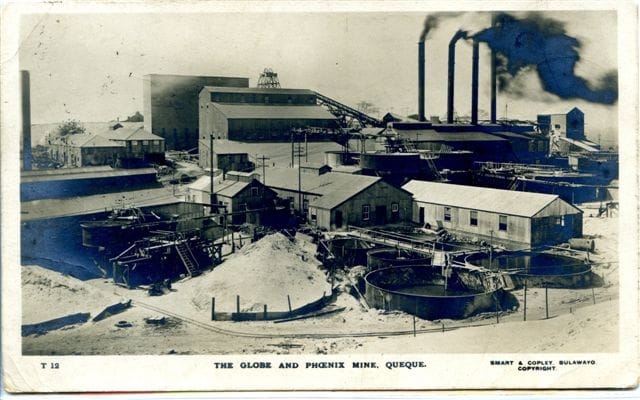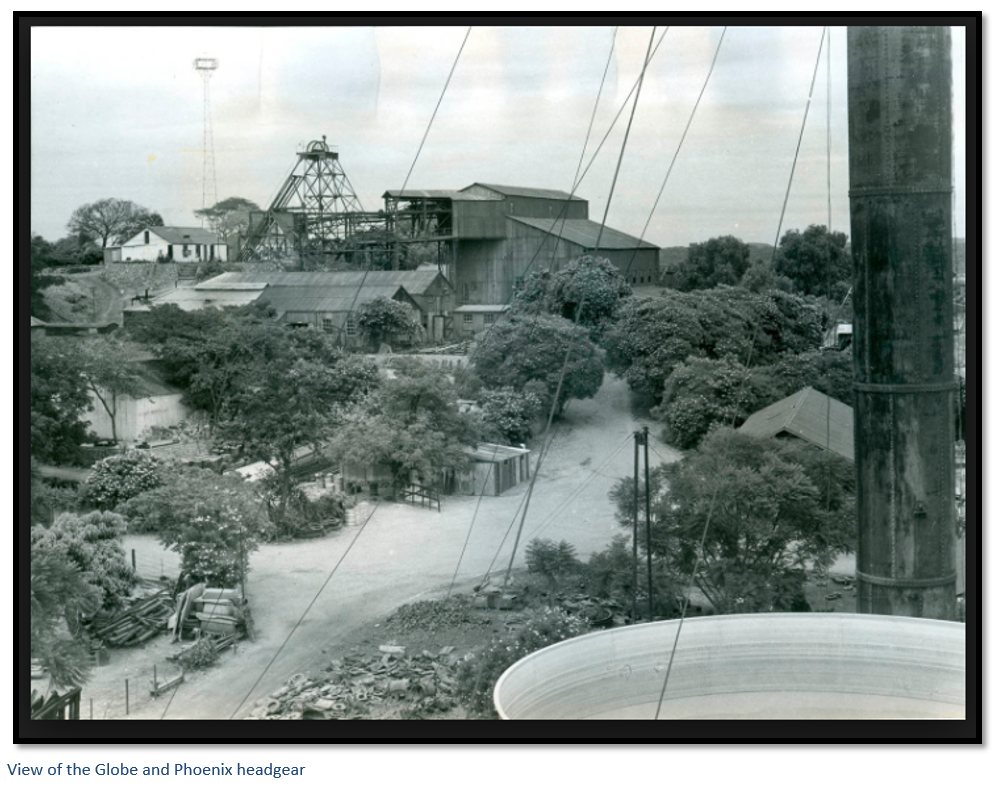Blasts from the Past!
I thought a blast or two from the past would be a fitting restart to the short stories I wrote building up to the launch of my first historical fiction book Whitewashed Jacarandas and the launch of the sequel Full of Possibilities.

I thought a blast or two from the past would be a fitting restart to the short stories I wrote building up to the launch of my first historical fiction book Whitewashed Jacarandas and the launch of the sequel Full of Possibilities.
Blasts from the Past!
Said to be the source of the Queen of Sheba’s fabled Ophir, The Globe and Phoenix Mine was pegged on an extensive hand-dug crater of the ancients, six hundred and fifty feet long and eighty-eight feet deep in 1894.
But disease, rebellion and war delayed delivery of the dynamite, mercury and arsenic, the 40 stamp mill and sundry other materials. It finally became operational in 1900.
Things began to run like clockwork. The mournful wail of the mine hooter signaling the change of every shift in the twenty-four-hour, 365-day cycle of Que Que’s Globe and Phoenix Gold Mine. The dynamiting and drilling never stopped: the stamps never stilled. The whirr of the overhead cocopans carrying ore from the shaft head to the crushing plant, the constant rumblings of the mill, the vovo sound of the vertical shaft’s hoist punctuated by the muffled shudder of the explosions of underground blasting throbbed through the buildings, the houses and the very mineworkers and their families themselves.
Keeping costs to a minimum, the directors were able to pay out over 100% dividends annually. In 1904, 61,553 tons of ore were milled, yielding 44,000 ounces of gold—almost one ounce of gold per ton of ore extracted!
Dynamite was shipped in 50-pound cases from South Africa’s De Beers factory at Somerset West in the Western Cape and a rival factory at Modderfontein in the Transvaal.
Dynamite weeps. Stored in a magazine, routinely the boxes are upended so the tears of nitroglycerine don’t pool at the bottom of the boxes but are reabsorbed by the dope. It’s best used fresh—within a year. With longer storage, crystals form on the outside of the sticks and make them additionally sensitive to heat and jarring.
One stick of dynamite contains a megajoule of energy, enough to light 10,000, 100-watt lightbulbs for a second. There are 100 sticks in a 50 lb. case. In the early hours of the morning on February 4, 1905 a mighty blast erupted from the magazine. Five hundred cases (11 tons) had exploded, gouging a crater twelve feet deep, thirty feet long, and twenty feet wide.
The explosion was heard fifteen miles away.
The roof of the mill building lifted. The windows on the west side blew in. Those on the east side blew out. The boiler house roof broke. The manager’s house and the G & P office ceilings were knocked down and windows blown in as well as the European Hospital’s opposite. Miraculously, the huts in the Native Compound were unaffected.
Nobody died, but most seriously, every single one of Stankey’s Hotel’s bottles of hootch were blown off the shelves. Had the Matabele Rebellion resumed? Some got out their revolvers and waited in their huts. Some prayed. Was the world coming to an end?
Although damages amounted to £2383 the rhythm of the mine proceeded uninterrupted with fresh explosives secured that same night.
Forty-six underground levels were established in the mine’s heyday.
But the G & P started reducing production after 1957 and stopped completely in 1975. The gold price jumped from a fixed price of $35 an ounce due to the "gold standard" for many years to $150 in mid 1974 and briefly went to $800 in 1980. It has been bouncing around just under $2000 an ounce for some years now.
The mine has undergone various ownerships since Rhodesia’s evolution into Zimbabwe. Currently, illegal gold panners are exploiting levels 1 and 2 as the ancients did (the levels below are flooded). There have been many incidents of tunneling too close to the surface. The dining room and kitchen of the sprawling mine doctor’s house I grew up in opposite the mine manager’s house at #1 Silver Oaks Road was swallowed up in a tunnel collapse last year.


Images of The Globe and Phoenix Mine, QueQue
My current blast from the past, the historical novel Full of Possibilities, picks up the threads of small-town Southern Rhodesia’s Whitewashed Jacarandas. These books depict the heady pulse of Rhodesia when Rhodes’ ambitions promised to come into being after a fifty-year slumber, with an infusion of young and ambitious blood anxious to make a new life after WWII.
The books are about racial arrogance, paternalistic idealism, Zionist fervor and anti-Semitism, the proper place of a wife, modernization versus hard-won ways of doing things, and treatment of endemic disease versus investment in public health.
Both Whitewashed Jacarandas and Full of Possibilities are available on Amazon as paperbacks and eBooks.

Full of Possibilities
By Diana Polisensky
Retail Price for Print: $19.99
Print ISBN-13: 978-0996688956
Retail Price for eBook $9.99
eBook ISBN-10 0996688951
I look forward to your feedback.
References:
- Zimbabwe Geological Survey Bulletin No 67. Part II
- The Economic Geology of the Country around Kwekwe, by A. Du Toit, Harare, 1998.
- Mines of Rhodesia, Ch 14
- Early Recollections, Mr. E.G. Mannix.
An Historical Account of the Globe and Phoenix Gold Mine, Heather Heap, University of Rhodesia Thesis 1971. - Olden Que Que, G &P Explosion, by H.W. Tyzack.
- Postcard credit: Rhodesian Study Circle.



